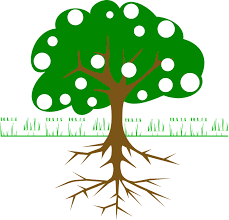This article by my colleague Jayme Klein truly is a gift appropriate for the festive season. December is a month when lots of folks gather with family to celebrate the holidays, and so it’s a great time for Jayme to remind us that many times researching a prospect well requires finding out more about their family and forbears. ~Helen
 As most of us know, research on a prospect isn’t really just about them. Wealth capacity can involve a spouse, parents, a child. When we’re tasked with telling someone’s story, sometimes we have to go back a few chapters.
As most of us know, research on a prospect isn’t really just about them. Wealth capacity can involve a spouse, parents, a child. When we’re tasked with telling someone’s story, sometimes we have to go back a few chapters.
Genealogical research is popular, and, as I can attest, addictive. But it can also add another angle to your prospect research by providing basic information such as birth dates and past addresses, giving context to family gifts, finding the background of a person named in a gift and establishing reasons for multi-generational wealth.
Due to their success and marketing, Ancestry is synonymous with genealogical material. However, it can be cost-prohibitive for small nonprofits unless you are accessing it from your local library. Luckily, there are plenty of free resources that can help you along the journey of your prospect’s family.
FamilySearch
FamilySearch is the main competitor to Ancestry. Users must create a profile, but access is free. The site offers both national and international records, from vitals (birth, death, marriage) to military records, probate/estate records and naturalization forms. I regularly cross-check records on Ancestry with those on FamilySearch, since dates and transcription standards differ from site to site.
Information that Ancestry didn’t think was necessary to transcribe can show up on FamilySearch, such as parents’ or spouse’s names on a birth or death record.
Geni
If you aren’t sure that you have the right person, double-checking on another site is a quick way to confirm you have your match. Another site, geni.com, requires a paid subscription, but many members make their family trees public. It can be a good start before confirming the facts.
Find a Grave
If you are trying to confirm a prospect’s ancestors, cemetery records are another way to answer questions about dates as well as familial relationships. Find a Grave is a volunteer-run site that populates photos and transcriptions of cemeteries worldwide.
Depending on how lax the rules are, or how friendly the office is, calling a cemetery can often confirm the names of other family members buried in a plot or who is financially responsible for their care.
Location, location, location
Steve Morse, a retired computer engineer, created an essential guide to census, passenger, translation and religious records. It is an easy way to significantly reduce the time it takes to search records that may not have been transcribed on the main genealogy sites. It offers search tools for records in Canada, Europe and the United States.
Want more international content? Try Google’s newspaper archive.
Researching in a specific region? The Ancestor Hunt makes it much easier to find what is available within Canada and individual areas within the United States. It is updated regularly and highlights any new items added (a big help to those of us that look at the same sites often).
If you are Facebook-oriented, there are hundreds of genealogy groups, many that are public, that break down research by location, country of origin and ethnic background.
Regardless of your prospect’s heritage, if they are from New York, the Italian Genealogical Group has created a fantastic index of what might be available.
New York courts also have marriage and divorce records. While it can be confusing, every state, county and town offer different information at different price points (some are free). A region’s historical society or regional religious organization can help break down brick walls.
More library magic
Don’t put away your library card just yet. Another tool for those trying to figure out the world of genealogy is a searchable archive of genealogical books.
Many libraries have genealogy-specific subscriptions that don’t require any payment the user. GenealogyBank is a tremendous newspaper archive (11,000 individual titles) from across the United States.
Town and academic libraries have a wealth of local information, including newspaper archives, naturalization records, even Sanborn maps – fire insurance surveys that specify businesses along city streets.
Many libraries will do lookups for free or for a small fee, if you know what you’re looking for, even if you don’t live in the area that your prospect’s family originated. County clerk offices often have naturalization and other vital records available – some that are digitized, depending on the location, others available for a small fee (often a few cents per page for a copy).
A little elbow grease can help, too
If you really need to dig, your State Archives have millions of records not yet digitized and ready for you to practice (or refresh) your microfiche skills.
It can be frustrating to find out that what you need is not indexed, digitized or even available, but there is a noble group trying to make them public. Reclaim the Records works through freedom of information laws (FOIA) to cut through red tape and bureaucracy to make records available to the public and digitize them for future use. A 501c3 made of volunteer researchers, historians, genealogists and open government advocates, they make sure that everything they uncover is put online for free for the public good. Their website is worth a look to see what they have achieved and are currently working on. If there’s information you need that is tied up, let them know!
What genealogical resources do you use to write your prospect’s story?
